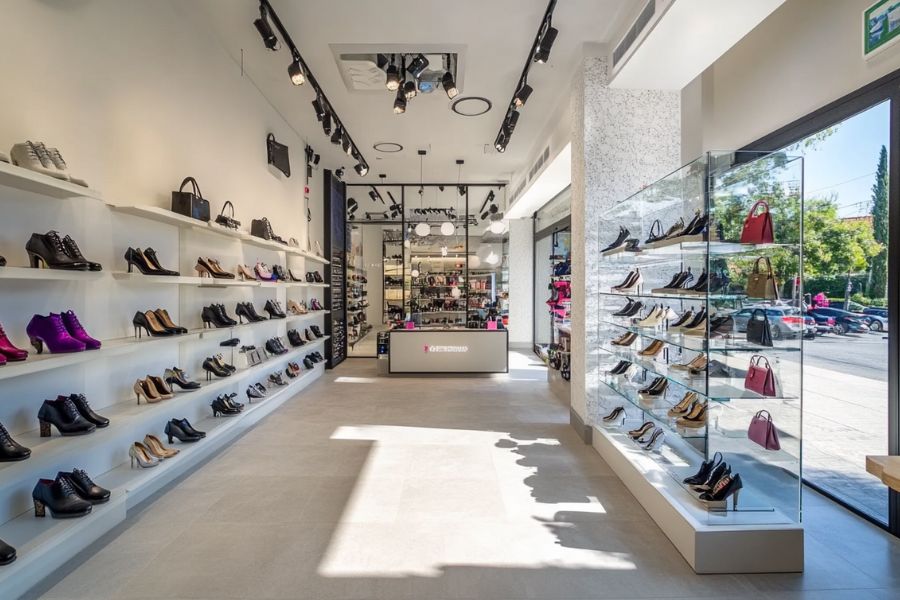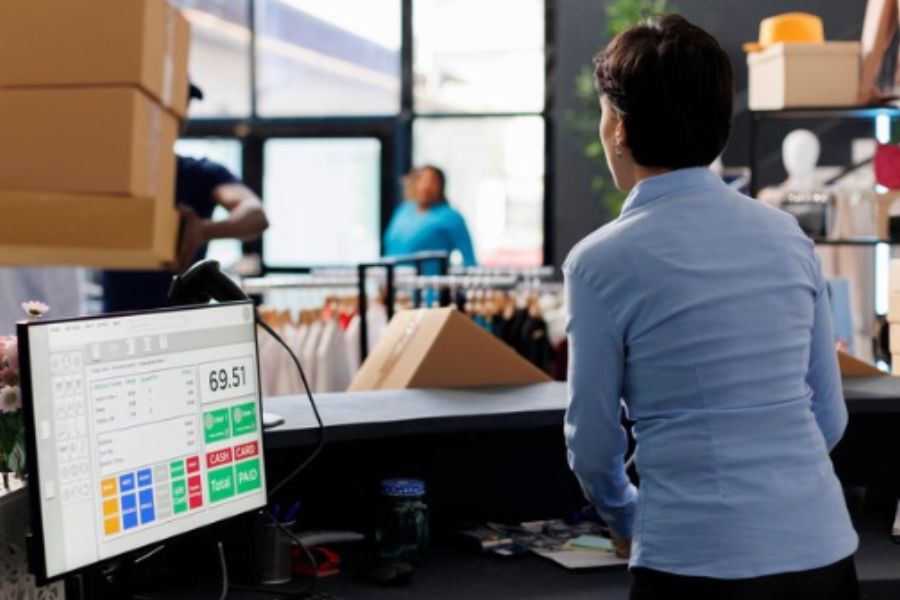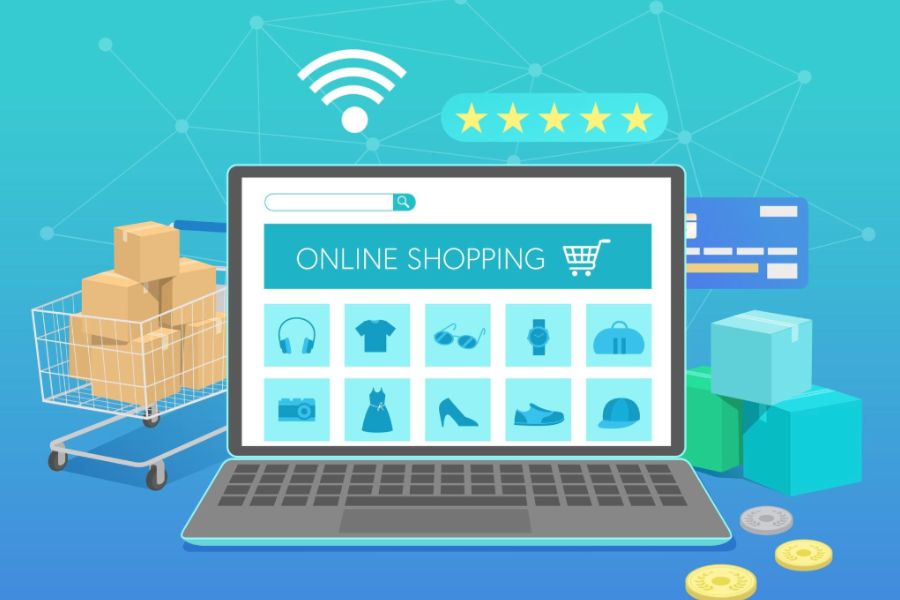Are you a shoe enthusiast eager to deliver the finest selection to your customers? Running a shoe store means juggling customer expectations, fast-changing trends, and operational challenges. A dedicated shoe store POS system can simplify these complexities, enabling better service while keeping your store ahead of competitors.
Before discovering the strategies for enhancing the customer experience, let’s explore the current landscape of the global footwear market and what it means for retailers.
Highlights:
- A shoe store POS streamlines essential operations like inventory tracking, customer data management, and seamless checkout, ensuring a smooth and efficient shopping experience for both staff and customers.
- Utilizing features like mobile checkout, personalized recommendations, and self-service kiosks empowers shoe stores to engage customers effectively and reduce wait times while avoiding common pitfalls like over-reliance on technology.
The Global Footwear Market Overview
The footwear industry has seen explosive growth, driven by consumer preferences for style, comfort, and functionality. In 2022, the global sneakers market hit $72.7 billion and is expected to exceed $100 billion by 2026 (Statista), showcasing the popularity of athletic and casual footwear. Leading brands like Nike, Adidas, and Puma dominate the field, with Nike’s $28 billion in 2021 sales surpassing Adidas and Puma combined.
Recent findings from the World Footwear Yearbook 2023 highlight a global consumption increase of 8.42%, reaching 20.6 billion pairs in 2022. This surge reflects growing demand for versatile footwear suitable for diverse lifestyles. Moreover, the rise of online shopping platforms and social media marketing enables consumers to access an extensive range of options, reshaping purchasing behavior and boosting sales across markets.
For shoe retailers, these shifts emphasize the importance of efficient operations and customer-focused solutions, making a robust POS system more critical than ever.
The Meaning of a Shoe Store POS for Business
A shoe store POS system is much more than a cash register – It’s the hub of operations for modern footwear retailers. It connects the dots between inventory management, sales, and customer service, creating a streamlined and efficient workflow.
For footwear retailers, managing a wide variety of sizes, colors, and styles can be a logistical challenge. A shoe store POS provides the tools to track inventory levels in real-time, ensuring popular items remain in stock while minimizing excess inventory. This system also simplifies handling returns and exchanges, a common scenario in shoe retail.
For customers, a POS designed for shoe stores improves the shopping experience by accelerating transactions and keeping comprehensive purchase records. Its capability to incorporate loyalty programs and personalized promotions adds significant value, aiding in customer retention and satisfaction. In essence, a shoe store POS goes beyond mere payment processing; it fosters more efficient operations and nurtures enduring customer relationships.
Fundamental Features of a Shoe Store POS
A robust shoe store POS system is tailored to handle the complexities of footwear retail while simplifying daily operations.
Real-Time Inventory Management
With a vast range of shoe sizes, colors, and styles, tracking inventory manually is time-consuming and prone to errors. A specialized POS system allows real-time monitoring of stock levels, helping retailers keep track of what’s available and what needs restocking. It integrates seamlessly with warehouses and online platforms to ensure accuracy across all channels.
Comprehensive Sales Reporting and Analytics
Footwear trends shift frequently, and staying ahead requires understanding customer preferences. A shoe store POS system provides detailed reports on best-selling items, slow movers, and seasonal trends. This insight enables retailers to plan smarter purchases, promotions, and markdowns.
Advanced Customer Relationship Management (CRM)
A strong CRM module tracks individual customer purchases, size preferences, and shopping habits. This data enables personalized recommendations and targeted marketing, enhancing the customer experience and fostering loyalty.
Mobile POS Features
Mobile POS devices empower store associates to assist customers more effectively. Staff can check stock availability, process payments, or place special orders from anywhere in the store, reducing wait times and enhancing service quality.
Efficient Returns and Exchanges
Returns and exchanges are a common part of the shoe business. A POS system streamlines this process by linking each transaction to the original purchase record, ensuring smoother operations and better customer satisfaction.
E-Commerce Integration
For retailers with both physical and online stores, integrating the POS system with e-commerce platforms allows for consistent stock updates, unified promotions, and features like BOPIS (Buy Online, Pick Up In-Store).
Loyalty Programs and Promotions
Reward repeat customers with loyalty points and exclusive discounts. A POS system simplifies managing these programs, creating opportunities to engage and retain customers.
An advanced system like ConnectPOS not only offers these features but also includes seamless integrations and innovative solutions to enhance business efficiency.
Strategies to Enhance Customer Experience with a Shoe Store POS
Enhancing customer experience in footwear retail is both an art and a science, requiring creative strategies paired with technology.
In this section, you can find five impactful ways to achieve this.
Personalized Recommendations Based on Real Data
A POS system equipped with CRM functionality can track purchase history, preferences, and even sizes, enabling tailored recommendations. For instance, suggesting accessories like insoles or matching socks when a customer buys running shoes enhances the shopping experience.
Example: Nike leverages customer data from its loyalty program and POS systems to offer tailored product suggestions both in-store and online, improving customer satisfaction and boosting sales.
Pitfalls to Avoid: Overloading customers with irrelevant recommendations can feel invasive. Ensure your system’s data analysis is accurate and recommendations are aligned with their purchase history and preferences.
Streamline the Try-On Process with Mobile POS
Mobile POS devices allow staff to assist customers with real-time inventory checks and purchase completions directly on the sales floor. This saves customers from waiting in long queues and enhances their overall shopping experience.
Example: At Nordstrom, associates use mobile POS devices to find shoe sizes, suggest alternatives, and complete transactions without leaving the fitting area.
Pitfalls to Avoid: Ensure staff are well-trained in using mobile devices to avoid delays or errors. Poor device maintenance or slow software can frustrate customers instead of impressing them.
Flexible Returns and Exchanges to Build Trust
Hassle-free return policies are a significant driver of customer satisfaction. A POS system that ties transactions to customer profiles can make the return process seamless.
Example: Zappos simplifies returns by linking purchase records to customers’ accounts, making the process fast and seamless.
Pitfalls to Avoid: Lack of proper policies or inadequate training for staff on handling returns can cause delays. Clearly communicate return terms to customers to avoid misunderstandings.
Create Memorable Omnichannel Experiences
A robust shoe store POS supports omnichannel operations by connecting online and offline inventory in real-time. This helps customers transition smoothly between channels, such as reserving a product online and picking it up in-store.
Example: Adidas employs a POS system that synchronizes inventory across its website and physical stores, ensuring consistent experiences regardless of where the customer shops.
Pitfalls to Avoid: Poor synchronization between systems can lead to stock discrepancies, causing customer dissatisfaction. Regularly audit inventory to ensure system accuracy.
Incorporate Self-Checkout for Convenience
Adding self-checkout kiosks allows customers to purchase items independently, reducing wait times and increasing operational efficiency during busy hours.
Example: Decathlon uses self-checkout kiosks, where customers can scan and pay for items themselves, speeding up the shopping process and catering to those in a hurry.
Pitfalls to Avoid: Ensure kiosks are intuitive and regularly maintained. Technical glitches or complex interfaces can frustrate users and create bottlenecks.
ConnectPOS: The Ideal POS Solution for Shoe Stores
ConnectPOS is crafted to address the unique needs of retailers, blending efficiency with customer satisfaction, including those in the footwear market. Its real-time inventory tracking ensures accurate stock levels, helping you avoid disappointing customers with unavailable sizes or styles. The system’s CRM features let stores curate personalized shopping experiences, from tailored promotions to recommendations based on past purchases.
Mobile POS functionality allows staff to assist shoppers throughout the store, offering size checks or style alternatives without delays. For peak shopping times, self-checkout options help reduce bottlenecks, enhancing the overall in-store experience. Meanwhile, detailed analytics and reports provide actionable insights into customer behavior and sales trends, supporting data-driven decisions.
The platform integrates seamlessly with e-commerce and other retail systems, creating a unified approach for managing both online and offline sales. For shoe stores looking to elevate operations while fostering customer loyalty, ConnectPOS offers a comprehensive and reliable solution.
FAQs: Shoe Store POS
1. What is the role of inventory management in a shoe store POS system?
Inventory management within a shoe store POS system tracks real-time stock levels, ensures accurate size availability, and minimizes overstock or shortages. This helps stores meet customer demands efficiently while reducing waste.
2. How can a shoe store POS system improve the in-store customer experience?
Features like mobile POS enable staff to assist customers directly on the sales floor, checking inventory or processing sales without delays. Self-checkout kiosks further enhance convenience by reducing queue times.
3. Are POS systems suitable for small shoe stores, or are they better for larger chains?
POS systems are scalable and can benefit stores of any size. Small shoe stores gain from streamlined operations and efficient inventory management, while larger chains leverage centralized data and advanced analytics to coordinate across multiple locations.
Conclusion
A thoughtfully chosen shoe store POS system can redefine how retailers manage operations and interact with customers. By integrating advanced features like real-time inventory tracking, personalized CRM tools, mobile checkout, and robust analytics, such systems help enhance customer satisfaction while boosting efficiency. Effectively leveraging these strategies ensures your store stands out in a competitive market.
With solutions like ConnectPOS, businesses can build seamless workflows and create exceptional shopping experiences, paving the way for long-term success. Contact us today to discover the endless possibilities ConnectPOS has to offer!



